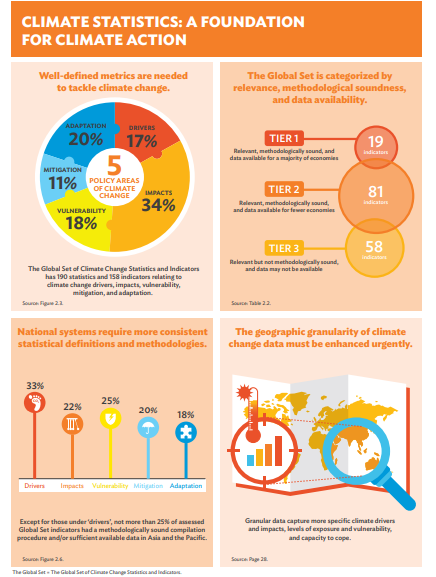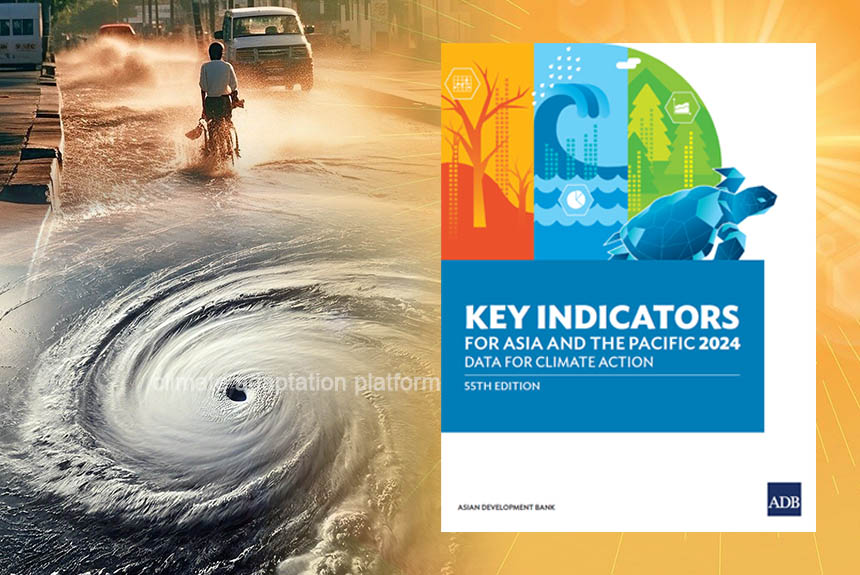Climate change continues to unleash its devastating impacts, and Asia and the Pacific are at the forefront.
A report by the Asian Development Bank or ADB entitled “Key Indicators for Asia and the Pacific 2024: Data for Climate Action Report” reveals that “in 2023, the world was confronted by an array of extreme weather events, demonstrating the complex and varied impacts of climate change around the globe. Asia and the Pacific sweltered under extreme heatwaves, with the mercury soaring above 45°C in many economies and all-time high temperatures registered in the Lao People’s Democratic Republic, Thailand, and Viet Nam (Key Indicators, 2023).”
The report also says, “Libya and India were inundated by catastrophic floods that claimed many lives; south-eastern Africa was left battered by Cyclone Freddy; Guam, Japan, the Philippines, and Taipei, China felt the destruction of Typhoon Mawar; Europe and the United States battled raging wildfires; tropical cyclones and severe storms hit Bangladesh, Indonesia, Myanmar, and Vanuatu; and Kiribati endured lingering drought (Key Indicators, 2023).”

Need for high-quality data for climate action in Asia and the Pacific
Despite the region’s high climate vulnerability, it significantly contributes to climate change, emitting over 50% of global carbon emissions. Emissions from the region are expected to grow, with 80% of the coal demand coming from the area.
The situation, therefore, calls for an urgent need to mitigate and plan for climate adaptation strategies. However, a successful climate change response in Asia and the Pacific would entail sufficient data, yet policymakers struggle to collect and analyse the data they need for effective climate action.
Without high-quality data and the ability to analyse it, policymakers in the area would be challenged to design effective, targeted measures to tackle the causes and effects of climate change and evaluate their effectiveness.
The 55th Edition of “Key Indicators for Asia and the Pacific” delves deep into the data necessary to guide climate-related policies. The 300+ page report presents the findings of the ADB’s survey, which covered 29 national statistical offices in Asia and the Pacific. It explains how data and statistics can play a crucial role in combating climate change.
The report contains four sections:
Section I provides an overview of Asia and the Pacific’s progress toward SDG 13 climate action targets and emphasises the urgent need for action.
Section II reviews the state of climate change data compilation and the Global Set of Climate Change Statistics and Indicators, highlighting significant statistical gaps that need to be addressed.
Section III highlights the value of geographically granular data for tailored policies, from identifying emission hotspots to pinpointing vulnerable communities.
Section IV discusses the need to strengthen statistical capacity on climate change data systems, addressing key challenges, promising initiatives, and essential collaborations to improve the availability, granularity, timeliness, accuracy, and quality of climate change statistics.
The global set of climate change statistics and indicators

Section 2 of the report introduces the Global Set of Climate Change Statistics and Indicators, an integrated statistical framework that aims to guide the creation, monitoring, and evaluation of global climate change policies. This framework aligns with multiple international standards, including the SDG indicators metadata, the Intergovernmental Panel on Climate Change (IPCC) guidelines from 2006, and the Sendai Framework for Disaster Risk Reduction 2015-2030.
Following the United Nations Statistical Commission (UNSC) recommendation of a common statistical framework that streamlines international reporting on progress toward global climate targets and enhances informed decision-making for national climate change policies, work to formulate a Global Set commenced.
The report states, “The Global Set was developed after a systematic review of over 7,500 indicators from 130 economies. To assess its capacity for sufficient data compilation, the initial Set was piloted in 42 economies, while 30 international and regional organizations examined the Set’s thematic and methodological soundness. Its development also considered existing climate-change-related statistics and indicators along with internationally accepted frameworks, standards, and guidelines, which are presented in Table 2.1.”
It also added that “the Global Set underwent an extensive review by the Expert Group on Environment Statistics and was further assessed via worldwide consultation in 2021. This rigorous review process produced a comprehensive statistical framework comprising 190 statistics and 158 indicators. Finally, the Global Set was adopted during the 53rd session of the UNSC in March 2022 (UNSD 2021a).”
The Global Set reflects the five key considerations or policy areas associated with climate change: drivers, impacts, vulnerability, mitigation, and adaptation. Of the 158 indicators in the Global Set, 34% focus on climate change impacts, 20% pertain to climate change adaptation, 18% relate to climate change vulnerability, 17% point to climate change drivers, and 11% address climate change mitigation.
The report outlines how data and statistics can be crucial in combating climate change. It demonstrates why governments must gather and analyse detailed and timely data to help respond to the climate crisis.
Source:
Key Indicators for Asia and the Pacific 2024: Data for Climate Action. (2024, August). Asian Development Bank. Retrieved from https://www.adb.org/publications/key-indicators-asia-and-pacific-2024



Leave a Reply